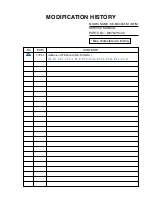
Product Information Guide
19
Regulatory Notices
Electromagnetic Interference (EMI) is any signal or emission, radiated in free space or conducted along power or signal
leads, that endangers the functioning of a radio navigation or other safety service or seriously degrades, obstructs, or
repeatedly interrupts a licensed radio communications service. Radio communications services include but are not
limited to AM/FM commercial broadcast, television, cellular services, radar, air-traffic control, pager, and Personal
Communication Services (PCS). These licensed services, along with unintentional radiators such as digital devices,
including computers, contribute to the electromagnetic environment.
Federal Communications Commission (FCC) Notice (U.S. Only)
Caution: This equipment has been tested and found to comply with the limits for a Class B digital device, pursuant to
Part 15 of the FCC Rules. These limits are designed to provide reasonable protection against harmful interference in a
residential installation. This equipment generates, uses, and can radiate radio frequency energy and, if not installed and
used in accordance with the instructions, may cause harmful interference to radio communications. However, there is
no guarantee that interference will not occur in a particular installation. If this equipment does cause harmful
interference to radio or television reception, which can be determined by turning the equipment off and on, the user is
encouraged to try to correct the interference by one or more of the following measures:
•
Reorient or relocate receiving antenna.
•
Increase the separation between the equipment and receiver.
•
Connect the equipment into an outlet on a circuit different from that to which the receiver is connected.
•
Consult the dealer or an experienced radio/TV technician for help.
This device complies with Part 15 of the FCC rules. Operation is subject to the following two conditions:
This device may not cause harmful interference.
This device must accept any interference received including interference that may cause undesired operation.
Instructions to Users: This equipment complies with the requirements of FCC (Federal Communication Commission)
equipment provided that following conditions are met.
Video inputs: The input signal amplitude must not exceed the specified level.
NOTICE:
Changes or modifications not expressly approved by the party responsible for compliance could void the
user's authority to operate the equipment.
IC Notice (Canada Only)
Most Dell digital apparatus are classified by the Industry Canada (IC) Interference-Causing Equipment Standard #3
(ICES-003) as Class B digital devices. To determine which classification (Class A or B) applies to your Dell digital
apparatus, examine all registration labels located on the bottom, side, or the back panel of your digital apparatus. A
statement in the form of “IC Class A ICES-003” or “IC Class B ICES-003” will be located on one of these labels. Note
that Industry Canada regulations provide that changes or modifications not expressly approved by Dell could void your
authority to operate this equipment.
This Class B (or Class A, if so indicated on the registration label) digital apparatus meets the requirements of the
Canadian Interference-Causing Equipment Regulations.
Cet appareil numérique de la Classe B (ou Classe A, si ainsi indiqué sur l’étiquette d’enregistration) respecte
toutes les exigences du Reglement sur le Materiel Brouilleur du Canada.
Summary of Contents for W4200
Page 2: ......
Page 6: ......
Page 28: ......
Page 52: ......
Page 72: ...70 Guía de información del producto w w w d e l l c o m s u p p o r t d e l l c o m ...
Page 73: ......
Page 74: ...Printed in Taiwan Imprimé à Taiwan Impreso en Taiwán ...












































